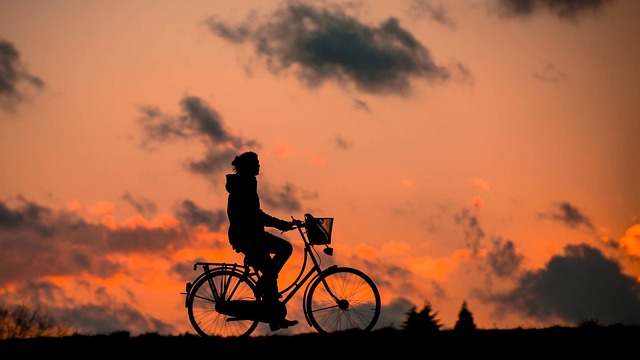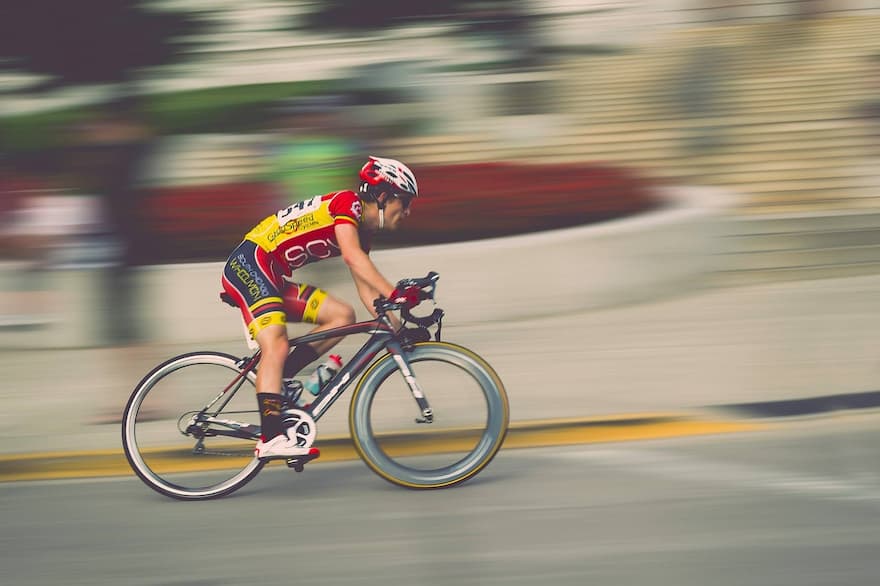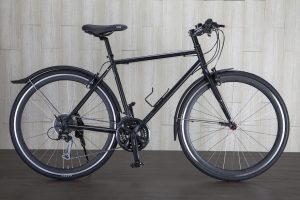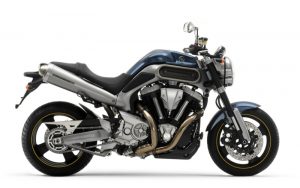Is cycling good for your butt?
The short answer is yes, cycling is good for your butt. However, it’s crucial to comprehend how it specifically affects the butt if you’re thinking about using it to tone your glutes and work your butt.
Will it get bigger or will it get better, smaller, tighter, toner looking? It’s important to learn about the advantages of cycling as well as the muscles used when cycling in order to comprehend that and determine if cycling is good for your butt.
Here’s the scoop.
Table of Contents
Does Cycling Work Your Butt Muscles?
If you’ve ever gone on a really long bike ride, it’s possible that the next day your muscles were sore. The muscles that were hurting were probably your quadriceps, which are located in the front of your thighs.
The majority of people tend to feel the effects of cycling there, but you can still make a few adjustments to your routine to focus on your butt muscles.
Muscle Groups Targeted While cycling
Cycling works every muscle in the body. Although it might not seem like it, cycling can have a surprising effect on the biceps and triceps. This is especially true if you ride a bike and frequently change your body position. Additionally worked are the back and stomach muscles of the core. The legs and glutes, however, benefit from cycling the most.
Quadriceps
The muscles on the front of the thigh are called quadriceps. These muscles are worked during peddling. During the downward pedal push, these muscles work the hardest. Since pushing the pedal down is practically required to ride a bike, these muscles are simple to target. As you ride the bike, these muscles receive a fantastic workout. By strengthening these muscles, you’ll improve your muscular balance and give your knee joints more stability, lowering your risk of injury.
Hamstrings
The hamstrings are the muscles at the back of the thighs. The pedaling motion puts the hamstrings to work, just like the quadriceps do. The only distinction is that these muscles work hardest as you raise the pedal to its initial position. This is the tricky part right now. Even though we can’t escape without depressing the pedal, if you pedal down hard enough, you can still perform a pull-up with little effort. The hamstrings may therefore not receive the same level of exercise as the quads. The secret is to use the entire pedal stroke. Instead of moving your feet in a piston motion, move them in a cyclic motion. Alternatively stated, apply the same amount of force when pushing the pedal down as when pushing it up. In order to target your hamstring, clip in pedals or pedal toe clips make it easier to pull the pedal up.
Gluteal Muscles
The gluteal muscles can be divided into three groups: the gluteus maximus, gluteus medius, and gluteus minimus. The buttocks contain the Gluteus maximus, the body’s strongest muscle. It controls hip and thigh movement. Directly beneath the gluteus maximus is the gluteus medius. The gluteus minimus muscle runs along the side of the buttocks and is joined to the trochanter. These muscles work together to form the buttocks. As you pedal the bike, they cooperate with the hip to rotate the thigh.
Cycling is a fantastic way to tone and shape the glutes. When you pedal while standing up, this muscle group is the one that is most heavily worked. As a result, it is best to pedal more intensely while going up on the stationary bike or cycle if you want to work on this area. However, if you’re outside riding your bike, you can achieve the same result by simply pedaling upwards.
Increasing the seat’s height is another excellent way to make sure the glutes are being exercised. The hip’s range of motion will be improved by raising the seat a little bit above what is necessary. By doing so, all three gluteal muscles will be targeted. To strengthen your glutes, it’s a great idea to incorporate easy exercises like lunges, step-ups with dumbbells, and squats into your routine. This is crucial because your potential for cycling will increase with glute strength! See more about Can You Get A DUI On A Bicycle?
Does cycling Increase Or Decrease The Size Of Your Butt?
Lose Fat By Cycling
You might be suffering from a little exercise boredom if the thought of taking one more aerobics class at the gym makes you want to run away and hide. Go outside to take in the scenery, fresh air, and exercise. Lace up your shoes. Put your bike helmet on. Bike riding can help you lose weight by burning about 500 calories per hour, which will help you get rid of an oversized tush.
Interval Training
Interval training can help you burn more calories, blast fat, and really work your leg and glute muscles during your cycling sessions. Alternate four minutes of leisurely cycling with one full minute of vigorous cycling. Alternatively to pedaling faster, you could incorporate a few uphill climbs into your workout. While still burning the same number of calories, interval training can help you cut 10 to 15 minutes off your one-hour workout.
Add Strength Training
Even though cycling works the butt muscles, you should still perform strength training exercises two to three times per week. Lifting and building the muscles for a shapelier, more appealing derriere can be accomplished through exercises like squats, lunges, and donkey kicks. Exercises for the upper body, like arm raises, chest presses, biceps curls, and dumbbell rows, can help you look lean and toned all over by counterbalancing your lower-body exercises.
Keep In Mind
Always give your body time to rest, regardless of your fitness objectives, whether you want to build a more shapely bottom or lose the jiggly tush. At the very least once a week, store your bike in the garage to give your body a day or two to rest. To give your muscles time to rest and repair, space your strength-training sessions by 24 hours. Take advantage of your rest day by relaxing or, if you must exercise, by going for a leisurely walk or practicing yoga. Consult with your doctor to get the go-ahead before you begin cycling for weight loss and muscle toning.

Effects Of cycling On The Butt
You are now aware that cycling works a variety of muscles in and around the legs and buttocks. But what does it really mean? Will they get a nice, defined shape or will they enlarge and become more muscular? Let’s find out exactly what cycling does for your buttocks now that we’ve partially addressed the question of whether it’s good for them.
Tones The Muscle
Let’s be clear: cycling won’t enlarge your butt. But it will undoubtedly tone your gluteal muscles, giving you well-defined buttocks. Having a toned butt demonstrates that your gluteal muscles are powerful and tight. Your butt will appear firmer and rounder as a result. Therefore, cycling is your best bet to see quick results if your goal is to shape your buttocks. The shape (and size) of the butt is, of course, greatly influenced by genetics, so keep that in mind as well. Your genetics determine the general shape of your glutes. This means that you can only work to an extent to get the all-time famous “bubble-butt”.
In addition, how the gluteal muscles are used for the majority of your life has an effect on how they naturally develop. For instance, those who engaged in gymnastics as children are more likely than those who did not to have developed glutes. Additionally, as they age, these individuals might discover it simpler to tone their glutes.
It is significant to note that while cycling works the gluteal muscles, the resistance is typically insufficient to develop large muscles. It is therefore extremely unlikely that cycling will result in you developing a hard, muscular tush. Although the genetically predetermined size and shape of your buttocks may not be something you can change, you can still improve the advantages you already have.
To get the best possible butt, all you need to do is get on a bike and work those muscles. Plus, you’ll get the legs of your dreams, giving you the physique of your dreams. Since cycling tones and defines your glutes, the answer to the question “Is cycling good for your butt?”, is definitely a yes!
Strengthens The Muscles
It is critical to realize that strength does not always appear to be physical size. cycling will therefore gradually make your gluteal muscles stronger, even though it is unlikely that it will change their size. For proper running mechanics and pelvic alignment, strong glutes are a necessity. Additionally, they shield the knees from damage and support the lower back, particularly when lifting. Additionally, strengthening your gluteal muscles will directly improve your athletic performance. It follows that having strong glutes will increase your speed and productivity. In other words, walking and running are two daily activities that require strong glutes.
You can try many low-extremity exercises, such as deadlifts and squats, to strengthen your glutes. Nevertheless, riding a bike is one of the best options. You can achieve your goals quickly by cycling. Additionally, cycling can be much more enjoyable than tedious and pointless exercises. What does this mean for your butt? Well, it’s the best, in my opinion!
Helps You Lose Fat Fast
Did you know that cycling is a fantastic way to lose the extra weight in your buttocks? cycling increases the body’s metabolic rate, which is why it is so effective at managing weight. Bike riding is the ideal exercise for burning fat when you factor in its cardiovascular benefits. The fact that you will lose fat in areas other than just your buttocks must be mentioned. cycling is a full-body workout, so you will burn fat throughout your body, which is great if you’re trying to control your weight.
According to research, in order to maintain a healthy weight, you should exercise for at least two hours per week. 300 calories are burned per hour while cycling steadily. Now, if you do the math, you will discover that cycling for about 7 hours a week should be sufficient to lose fat. Therefore, cycling for an hour each day ought to be sufficient. If that seems overwhelming, it is best to start out slowly and increase your endurance to accomplish the desired results. And since cycling helps you lose fat around the buttocks, the answer to the question “Is cycling good for your butt?”, is a resounding yes!
Allows For Interval Training
Bike riding is fantastic because it allows you to try new things. cycling allows for interval training, which is one of the main factors that lead to its popularity. It entails doing high-intensity exercise in brief bursts. There are longer intervals of low-intensity exercise in between these high-intensity workouts. Interval training while riding a bike will help you lose weight quickly and put a lot of stress on your glutes. You can easily change the resistance level on a stationary bike to exercise at various intensities. However, if you’re outside riding a bike, riding it uphill will be equivalent to a brief period of intense exercise. Is cycling healthy for your butt? You bet it is because you can add in high intensity interval training to sculpt your glutes!
Work Out Your Butt Muscles When Cycling
Visualize And Activate Your Glutes
The first step in making cycling good for your butt is to make sure your butt muscles are engaged and working while you pedal.
Imagine your muscles contracting as you press down on each pedal.
I like to think of each downstroke on the pedal as being similar to a single-legged squat where you are pushing through your heel from a bent-leg position to help me visualize this. As you do this, tighten and contract your glutes on that leg.
Setup Your Cycling Position
You can try setting up your bicycle so that your legs are in the best position to engage your glutes while cycling to further improve your butt workout.
The best way to target your glutes while pedaling is to position your seat so that your knee is bent to close to 90 degrees when your pedal is up. If you think of the motion that you do when doing squat exercises, it is not too far of a stretch to see this.
In this way, depressing the pedal feels similar to performing a deep single-leg squat, which you can do while depressing through your glutes. I’ve discovered that a lower seat height makes it possible for me to pedal with the most force on my butt muscles. At the top of the pedal, where my thigh is almost parallel to the floor, I concentrate on pushing down with my glutes rather than my quads.
I also try to raise my handlebars to keep my torso as upright as possible. This position feels a lot like lunging while maintaining an upright posture, which I’ve found helps shift the weight into my glute muscles.
*It’s also important to note that some people believe that your seat shouldn’t be positioned so that your knees can cross your hip’s horizontal line. In fact, some people advise against raising your knees at all because doing so could cause knee pain, especially during the downstrokes of pedaling when you might be applying some force. Please set up your riding position according to your comfort level, using common sense and your own research. There isn’t really a one-size-fits-all solution because everyone’s body mechanics and proportions are unique.
Stand Up When Hill Climbing
When cycling up hills, avoid using the gears and you’ll get a great butt workout. I prefer to keep my bike in a higher gear because it provides adequate pedal resistance. And after that, as I pedal, I stand up. In order to feel it most in my glute muscles, I once again try to keep my torso as upright as possible without leaning too far forward.
Push Through Your Heels
To push through your heels rather than your toes is a good tip I like to borrow from almost any butt exercise. Try to use those butt muscles by doing the same when pedaling.
Please use caution as I admit that my lower seat position puts me at risk for knee pain or injury if I forcefully push through my heels while fully seated and have my knees too far forward over my feet. If you reflect on the mechanics and form of a squat again, you should only do this if your position while riding a bicycle closely resembles a proper squat (i.e. avoid the knee extending over your toes too much and applying force). Due to the size and setup of their bicycle frames as well as their unique body mechanics and proportions, some people might find this to be impossible.
Avoid taking a chance if you’re unsure! First, seek out expert counsel.
Conclusion
For your butt, cycling can be fantastic. It combines resistance training with cardio to help you build muscle. The most important thing is to make sure that you can use your glutes to pedal rather than letting your quadriceps do all the work.
It may take some time before you can feel the effects of cycling in your butt, but if you experiment with your seat position, modify your riding technique when climbing hills, and most importantly, concentrate on squeezing your glutes with each pedal, your butt muscles will start to hurt in no time.
Cycling, in my opinion, won’t make your butt bigger, but it can give it nice definition and aid in weight loss!
I appreciate you reading.



